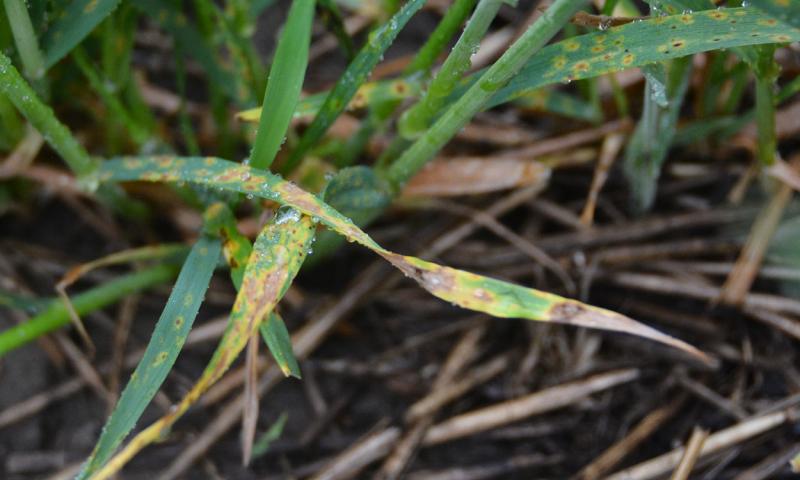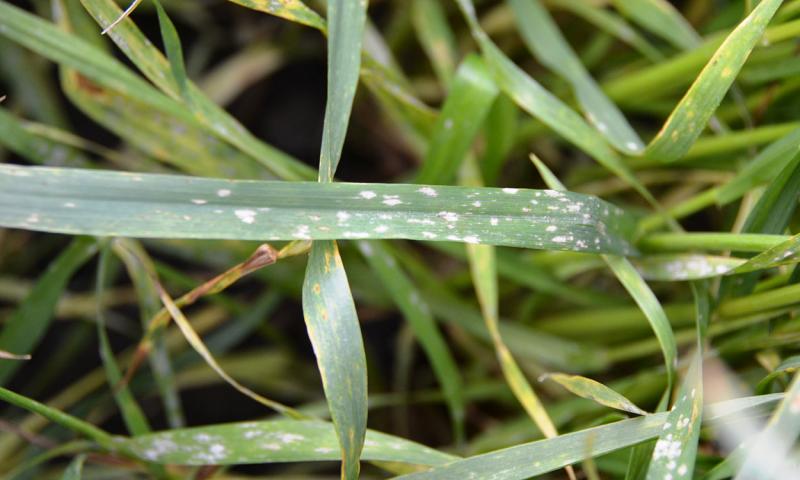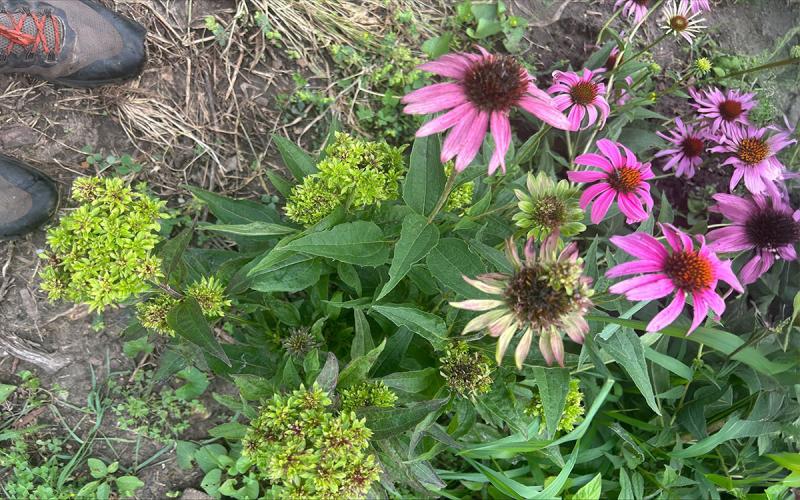
Written with contributions by Emmanuel Byamukama, former SDSU Extension Plant Pathologist, Dalitso Yabwalo, Abraham Hangamaisho and Shaukat Ali.
Tan spot was observed in a few winter wheat fields scouted recently. Tan spot is caused by a fungal pathogen, Pyrenophora tritici repentis, which survives on wheat stubble. The disease can lead to poor tillering and continued development can reduce yield. It is important to scout winter wheat for tan spot and other early diseases developing before deciding to apply an early-season fungicide tank mixed with herbicide.
Scouting for Tan Spot
Tan spot lesions appear first on the lower leaves and over time can be found in the mid-canopy or throughout the canopy. Tan spot lesions are dark brown surrounded by a yellow halo (Figure 1). These lesions can coalesce, leading to the premature dying of infected leaves.
Other Diseases To Keep an Eye on Early in the Season

Powdery Mildew: Powdery mildew is another disease which tends to develop early in the season. It is more common in highly tillered fields (due to high soil fertility or high planting population). Powdery mildew develops in lower and mid-canopy leaves due to poor air movement and prolonged free moisture. Initial symptoms of powdery mildew are small, cottony mycelia on the upper-leaf surface and lower parts of the stem (Figure 2). Continued disease development can cover an entire leaf surface with a powdery, ash-like material, and this disease level can reduce grain yield.
Stripe Rust: Stripe rust can also develop in winter wheat early in the season. Stripe rust has already been observed in Nebraska this spring. This observation indicates the inoculum availbilty of stripe rust in the area. Therefore, the risk for stripe rust to occur is high given that the winter wheat crop is relatively behind in growth. Stripe rust forms yellow-to-orange stripes on infected leaves.
Early Fungal Disease Management
Growers should scout their winter wheat fields to determine the type and level diseases developing before deciding to apply a fungicide early in the season. For fields planted into wheat stubble and with lower leaves showing fungal leaf spots developing, a fungicide applied at herbicide timing may be beneficial. However, an additional fungicide may be needed at flowering to protect the flag leaf and the leaf below the flag leaf, as well as protect against Fusarium head blight, depending on the weather conditions conducive for disease development. Use the Mesonet at South Dakota State Small Grains Disease Prediction Tool to keep track of weather conditions suitable for leaf-spot diseases and Fusarium head blight. Be sure to select the weather station nearest your area and the growth stage for the forecast.
Also, crop rotation that includes a broad-leaf crop, such as sunflower, soybean, field peas and others can help reduce inoculum of residue-borne pathogens.

